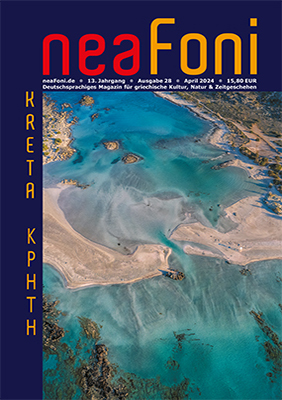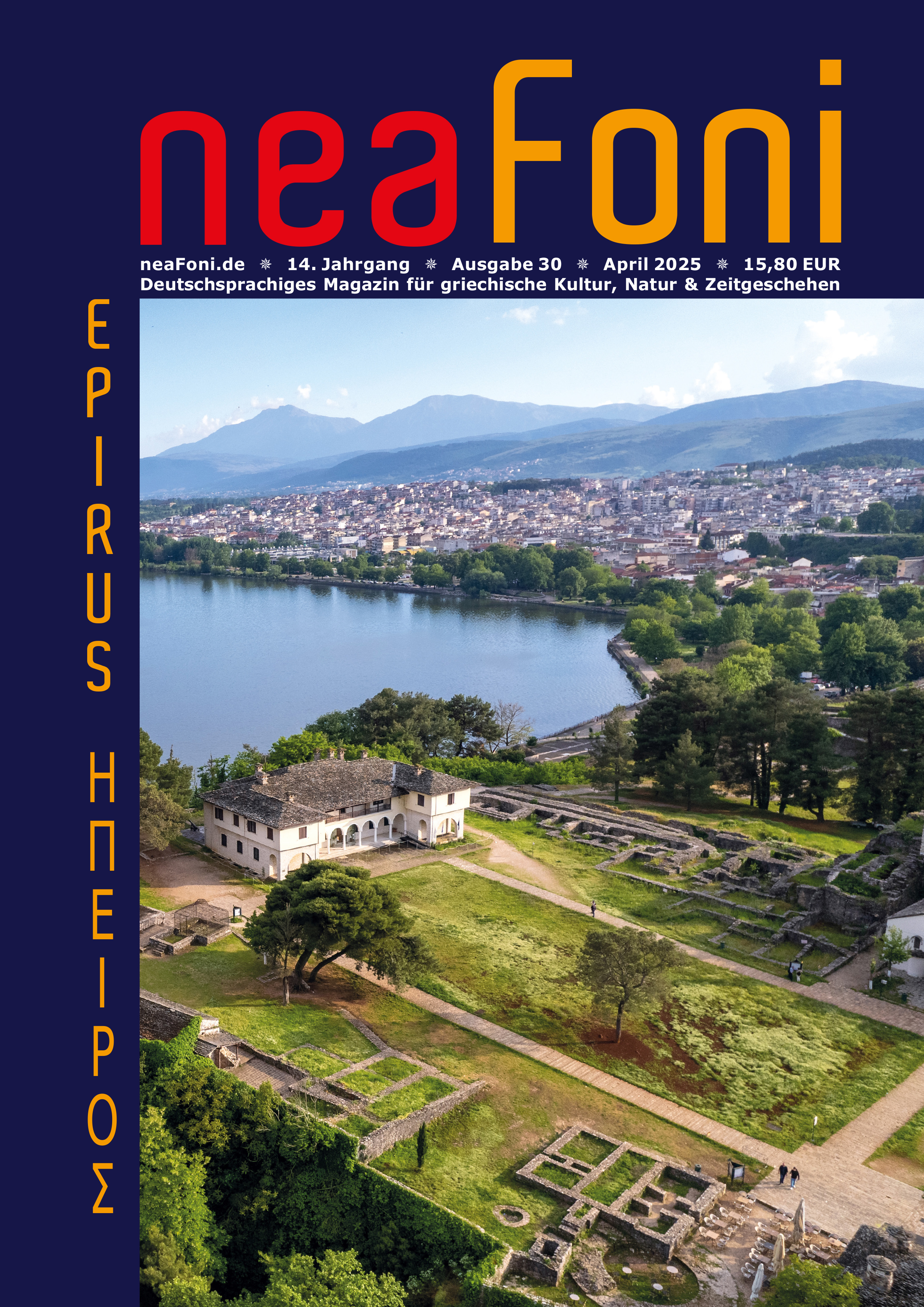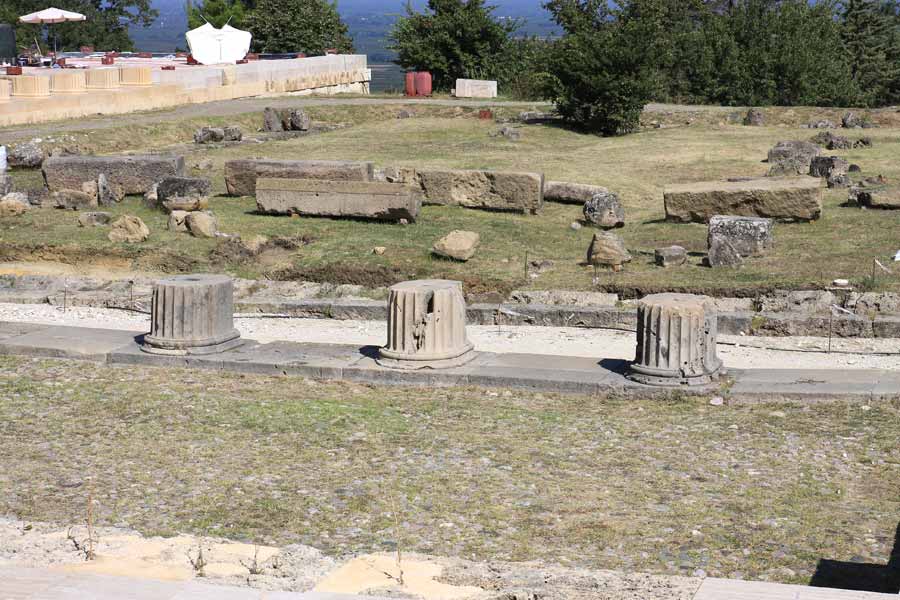Vergina, im Altertum Aigai genannt, ist die wohl wichtigste antike Sehenswürdigkeit in Nordgriechenland, doch leider auch die am wenigsten besuchte. Die 80 km südwestlich von Thessaloniki gelegene ehemalige Palastanlage König Philipps II. von Makedonien stellt ab jetzt mehrere neue Ausgrabungsfunde aus, darunter zwei große silberne Grabgefäße. In einem von diesen Gefäßen fand man Knöchel eines jungen Adeligen und vermutet dahinter den ermordeten unehelichen Sohn Alexanders des Großen.
Die lange Geschichte der Ausgrabungen begann, als der Universitätsprofessor für Archäologie an der Universität Thessaloniki, Emmanuel Andronikos, in den Jahren 1977-78 die königlichen Gräber Makedoniens entdeckte. Diese können als ein Beispiel der monumentalen Kunst der Antike bezeichnet werden. Die gut erhaltene Freskenmalerei mit Darstellungen vom „Raub der Persephone durch den Gott Pluto, in einem vierspännigen Wagen stehend“ und den Szenen aus einer Jagdgesellschaft unter Löwen und Ebern gehören zu den Meisterwerken dieser Zeit. Die königliche goldene Schmucksammlung ist eine weitere bedeutende Attraktion des örtlichen Museums.
Glanzstück des Museums ist ein 7 Kilo schwerer goldener Schrein, der vom Stern von Vergina, dem Emblem der makedonischen Könige, geziert wird. Die Krone der makedonischen Könige bestand aus einem Kranz mit über 300 goldenen Eichenblättern und 68 Eicheln. Erwähnenswert ist auch die prachtvolle Waffenausrüstung eines vornehmen Kriegers.
Die damaligen und heutigen Funde sowie die Vielfalt der Grabanlagen beweisen den Reichtum und die soziale Entwicklung der Hauptstadt Makedoniens. In der Nähe wurden die Stadtmauer, ein Palast, ein antikes Theater und die Ruinen des Tempels von Eukleia entdeckt und präserviert.
Das lokale Museum bietet Besuchern mit der Vielfalt seiner Ausstellungsgegenstände die einzigartige Möglichkeit auf eine Reise ins letzte glanzvolle Königtum des alten Griechenlands zu gehen.





